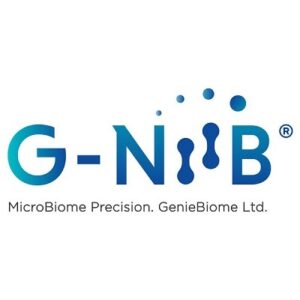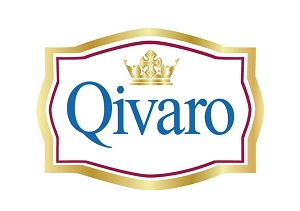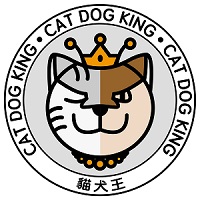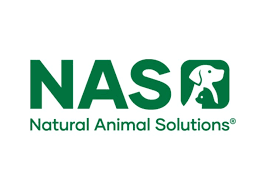
Common genetic diseases in purebred dogs that every pet owner should know
In the breeding of purebred dogs, the pursuit of a cute appearance has led to inbreeding and the breeding of dogs with defects. This has resulted in the transmission of genetic defects to the purebred population, making them more susceptible to congenital diseases. Most congenital diseases can be cured with medication or surgery, but some serious illnesses require careful care from the owner, including regulating diet and lifestyle, and long-term medication to slow disease progression. Understanding common canine genetic diseases and monitoring a dog's health is crucial for early intervention and reducing health problems. Below, Gogo Herbs introduces common congenital diseases in purebred dogs and their special care.
Common hereditary organ diseases in purebred dogs
Hereditary heart disease
Congenital heart disease in dogs is mainly classified into three categories: chronic valvular heart disease, valvular heart disease, and dilated cardiomyopathy, all of which affect blood supply throughout the body. Prolonged ischemia in vital organs can eventually lead to heart failure. Small and tomcat breeds are more prone to heart disease, and the incidence increases with age. Dogs with heart disease often experience prolonged coughing and wheezing, with symptoms worsening after exercise. They may also experience decreased energy, curiosity, and activity levels, and may even faint suddenly. Currently, there is no cure for hereditary heart disease; therefore, it is crucial to administer medication at the right time to control the condition, extend the dog's lifespan, and improve their quality of life.
Small and toddler breeds susceptible to disease: common
Medium-sized dogs prone to illness: Samoyed
Large dog breeds prone to disease: Boxer, Doberman Pinscher
Dog care recommendations: Dogs over five years old should be taken to the vet for a heart check-up every six months. If your dog shows symptoms related to heart disease, please record your dog's breathing rate and heart rate per minute, and take your dog for further examinations such as X-rays, echocardiograms, and electrocardiograms to confirm the diagnosis. After your dog is diagnosed with heart disease, it is essential to avoid stimulation and high-intensity exercise, strictly follow the vet's instructions for medication, and have regular follow-up visits to monitor the medication's effectiveness.
Hereditary pancreatitis
Pancreatitis is related to factors such as genetics, obesity, and excess body fat. Acute pancreatitis can lead to various complications, such as shock, peritonitis, sepsis, jaundice, hypocalcemia, and respiratory distress. Affected dogs may exhibit loss of appetite, frequent vomiting throughout the day, loose stools, and severe abdominal pain. The following small breeds are at high risk of developing pancreatitis; fortunately, with timely and appropriate treatment, acute pancreatitis is generally curable.
Small dog breeds prone to illness: Cocker Spaniel, Miniature Schnauzer, Toy Poodle, Dachshund
Dog care advice: For this type of dog, owners should choose high-quality lean meat when feeding it and control the portion size according to the dog's weight to avoid overburdening the pancreas. If the dog is obese, you should gradually help it lose weight, and you can choose to add prebiotics to its staple food to help it digest better.
Common hereditary diseases of the five senses in purebred dogs
Congenital eye disease
Congenital eye diseases are also common in small breed dogs, affecting their vision and even leading to blindness. Some congenital eye diseases, such as progressive retinal atrophy, are currently incurable, and medication can only slow their progression. However, for eye diseases such as cataracts, glaucoma, uveitis, excessive eyelashes, and eyelid hyperplasia, good treatment results can be achieved through medication and surgery, greatly reducing the risk of blindness in dogs. Some sheepdogs carry a recessive gene that may cause incomplete development of the retina, sclera, choroid, and optic disc in both eyes, which may manifest as no symptoms or bilateral blindness. Currently, there is no ideal treatment for this condition.
Small and toddler breeds susceptible to disease: common
Medium-sized dog breeds susceptible to this disease: Sheepdogs (congenital eye abnormalities)
Large dog breeds susceptible to this disease: Labrador Retrievers, Akitas (progressive retinal atrophy).
Dog care advice: Anthocyanins, carotene, and Omega-3 can help slow down the degeneration of a dog's eyes. In particular, senior dogs over 7 years old need to be supplemented with food or health products rich in these nutrients.
Common Respiratory Genetic Diseases in Purebred Dogs
Tracheal collapse
Tracheal collapse is a relatively dangerous hereditary respiratory disease, more common in small and tomboyish breeds. A collapsed trachea obstructs airflow, even completely blocking the upper respiratory tract, causing the dog to suffocate due to oxygen deprivation. Dogs with tracheal collapse are very sensitive to temperature changes; during seasonal transitions and periods of large temperature fluctuations, they are prone to wheezing, making hoarse breathing noises, turning blue at the mouth and tongue, and even fainting.
Susceptible to disease in toddler breeds: Chihuahua, Yorkshire Terrier, Maltese, Papillon, Pomeranian
Small dog breeds prone to illness: Toy Poodle
Dog care advice: When caring for this type of dog, pay attention to keeping it warm and preventing heat loss. Avoid using collars that could compress the trachea. For young puppies, surgical placement of a tracheal stent may be considered. Supplement your dog's diet with nutrients daily, and you can also use traditional Chinese medicine to regulate their health. Herbs such as cordyceps and lingzhi can help strengthen your dog's cardiopulmonary function, improve immunity, and prevent tracheal collapse.
Short-snouted canine respiratory obstruction syndrome
The receding of the skull in flat-nosed dogs compresses the airway, and their narrow nostrils and thick tongue further obstruct airflow. This unique head structure makes respiratory obstruction syndrome very common in flat-nosed dogs. Airway obstruction syndrome in flat-nosed dogs can cause breathing difficulties, open-mouth breathing, poor heat dissipation leading to heatstroke, and may also trigger a range of cardiovascular and hypoxia-related diseases.
Small dog breeds prone to illness: Shih Tzu, Pekingese, Pug, Cavalier King Charles Spaniel, French Bulldog
Medium-sized dogs prone to illness: English Bulldog
Large dog breeds prone to disease: Boxer
Dog care advice: Owners should keep their dogs in a well-ventilated, cool environment, and never in a confined space with a stuffy nose. During the hot summer months, owners should avoid taking their dogs out during the day. When feeding, avoid giving large pieces of food, and when giving water, give small sips in small amounts to prevent choking. If your dog frequently has difficulty breathing, surgical removal of soft tissue and nasal dilation may be considered.
Common skeletal genetic diseases in purebred dogs
Congenital organ cartilage structure incompleteness
Dogs with congenital organ cartilage dysplasia have less cartilage covering their bones, making them more fragile and their joints less supported. This makes them more prone to fractures when they fall or are impacted. Affected dogs also have a greater risk of tracheal collapse and herniated discs.
Susceptible to disease in toddler breeds: Chihuahua, Yorkshire Terrier, Maltese, Papillon, Pomeranian
Small dog breeds prone to illness: Toy Poodle, Miniature Schnauzer
Dog care tips: When caring for a sick dog, ensure that furniture and items in the home are level to prevent the dog from climbing, falling, and fracturing bones. When taking your dog out, avoid prolonged running or vigorous play with other dogs, and prohibit your dog from jumping up and down stairs.
Intervertebral disc disease
An intervertebral disc is a fibrocartilaginous disc that connects two vertebrae, providing cushioning and protection when the spine bends. When a dog's intervertebral disc ruptures or protrudes, its neck or thoracic and lumbar spine movement is restricted, causing pain during movement. If owners notice their dog's neck is stiff, unwilling to lift its head, has uncoordinated movements, an arched back, difficulty walking and running, or dragging its hind legs, it may have an intervertebral disc problem.
Susceptible to disease in toddler breeds: Papillon
Small dog breeds prone to illness: Pekingese, Shih Tzu, Corgi, Dachshund
Dog Care Tips: Intervertebral disc herniation is an irreversible condition. If your dog is a high-risk breed, extra preventative measures are necessary. Prevent your dog from jumping on or off sofas and avoid letting it go up or down stairs. When taking your dog out, minimize walking time and discourage excessive running and jumping. When carrying your dog, support its abdomen and chest with your arm to reduce strain or pressure on its lumbar spine. For dogs with long bodies and short legs, hind-leg standing training can easily cause intervertebral disc injury; owners should never attempt this.
Elbow and hip dysplasia
Elbow and hip dysplasia is more common in large dog breeds and is a congenital cause of instability and lameness in dogs' forelimbs and hind limbs. If not treated in time, it may lead to degenerative arthritis or even disability.
Small dog breeds prone to illness: Pug, Shetland Sheepdog, Shiba Inu, Corgi
Large dog breeds prone to illness: Golden Retriever, Labrador Retriever, German Shepherd, Great Pyrenees
Dog Care Advice: Most puppies don't show symptoms until after six months of age. A check-up can be scheduled when the puppy is 3-4 months old. Early treatment usually involves medication. Appropriate supplementation with glucosamine, chondroitin, and collagen can help repair joints and relieve swelling and pain. Muscle atrophy may occur on the affected side, further affecting the dog's mobility. Owners need to guide their dogs in muscle strengthening exercises. Training should be done on surfaces with good friction, such as grass, carpet, and puzzle tiles. Simple exercises like sit-stand, leg lifts, and obstacle crossing can be introduced. Later stages of the disease can be treated surgically. Most dogs recover well after surgery and enjoy a lively and happy life.
Common endocrine genetic diseases in purebred dogs
Hypothyroidism
Hypothyroidism is a common endocrine disorder in dogs. Due to insufficient secretion of thyroid hormones, it can cause a slowed heart rate, decreased digestive function, and anemia. Dogs with hypothyroidism may become lethargic, have low exercise tolerance, loss of appetite, weight gain, dry fur, hair loss, and be prone to bacterial and parasitic infections. Hypothyroidism can also affect the function of multiple organs.
Susceptible to disease in toddler breeds: Chihuahua, Pomeranian, Maltese
Small dog breeds prone to illness: Shih Tzu, Corgi, Shiba Inu, Beagle
Medium-sized dog breeds susceptible to disease: Huskies, German Shepherds
Large dog breeds prone to disease: Golden Retriever, Doberman Pinscher
Dog care advice: Hypothyroidism typically develops around age seven. If your older pet becomes less active, sleeps more, and is lethargic, exhibiting these symptoms, you should take your pet to the vet for a blood test. Hypothyroidism requires long-term medication and regular checkups to monitor hormone levels in the dog's blood and adjust the dosage. After medication, the dog's coat and skin condition will show significant improvement.
diabetes
Congenital diabetes is another common endocrine disorder in dogs. Affected dogs exhibit symptoms such as thirst, frequent urination, increased appetite but weight loss, irritability, and lethargy. However, because there are many causes for these symptoms, the disease often progresses to the late stages of diabetes, and owners only take their dogs to the vet when vision problems appear, delaying treatment. If diabetes is not treated systematically and promptly, it can develop into hyperketonemia, leading to kidney failure, coma, or death.
Small dog breeds prone to illness: Miniature Schnauzer, Dachshund, Toy Poodle
Medium-sized dog breeds susceptible to disease: Samoyed, Husky, Chow Chow
Large dog breeds prone to illness: Labrador Retriever, Golden Retriever
Dog Care Recommendations: Dogs with diabetes need daily blood sugar monitoring and consistent insulin therapy. Dietary considerations include ensuring adequate nutrition and regular feeding times. Choose high-protein, low-fat foods, supplementing with a variety of carbohydrates and dietary fiber. Additionally, scientifically plan the dog's daily food intake and feed at regular times to ensure the insulin's effectiveness. While canine insulin can effectively control diabetes, owners should also encourage exercise. For dogs without joint or skeletal diseases, a brisk walk of 5-10 km daily is recommended.
Besides the common genetic diseases mentioned above, some genetic diseases are accompanied by obvious symptoms, such as diarrhea, wobbling, poor coordination, difficulty breathing, and sudden weight loss. Owners need to pay attention to these signs of health abnormalities and take their dogs to the vet promptly. Every owner must understand the potential diseases dogs may suffer from before getting a dog, make a careful decision, and be prepared to care for their dog for life. Gogo Herbs is committed to researching scientific pet care solutions. We carefully select healthy and effective pet products to help prevent diseases and improve the quality of life for pets. For example, Hill's™ Pet Food Adult Dog Low-Calorie Formula uses high-quality protein and natural fiber to provide a satisfying feeling of fullness, and adds L-carnitine to help control calorie intake in the long term. Hill's™ Pet Food Perfect Weight Chicken Special Recipe is specially developed for small and miniature adult dogs and has been clinically proven to help dogs lose weight significantly and safely within 10 weeks, maintaining lean muscle mass. Gogo Herbs' professional nutrition and veterinary team is continuously protecting your pet's health. If you would like to learn about a suitable health care plan for your pet, please contact us via Whatsapp +852 5483 0695.
Related Products:
-
Sale!
 Out of stock
Out of stock
NurseMate – Milk Taste Colostrum Nutritional Cream 15ml
Original price was: $198.00.$158.00Current price is: $158.00. Read more -
NurseMate – Milk Taste Colostrum Nutritional Cream 30ml
Original price was: $299.00.$279.00Current price is: $279.00. Add to basket -
Monster Tribe – OK! Probiotics for Dogs and Cats 1.5g 30 packs
Original price was: $190.00.$160.00Current price is: $160.00. Add to basket -
Monster Tribe – Dietary Fibre + Probiotics + Digestive Enzymes Probiotic Hair Removal Powder 50g
Original price was: $128.00.$90.00Current price: $90.00. Add to basket

































































